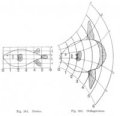Post a message
Replying to:

Tensegrity ?
translated from French by Jennifer Neal; read in french 👉here👈
I don’t know, if nowadays, we can be osteopath without having heard of tensegrity. Since Jean Francois Megret’s voluminous these, more than 15 years ago (http://biblioboutik-osteo4pattes.eu/spip.php?article39 ), to authors like Alain Gehin (Tensegrity Concept in Osteopathy) ; Graham Scar (Biotensegrity : the structural basis of life); Michèle Tarento (Build your body with the osteo awakening et biotensegrity), there is a lot to read on the subject.
A subject that can leave us perplexed so much as, immerse ourselves in the fasciae and other tensegritive tissues can look like an infinity source of complex notions and far from our anatomic landmark. Yet, even if it means oversimplifying, the terms allowing us to dive with our hands in the tensegrity and its range of possibility are restricted. Thus, it happens that we define tensegrity as: a self-restrained physical structure, made out of tubes and ropes which are modelling under the influence of internal and external forces: islands of compression, in an ocean of tension… we are told. Or even, we know that putting pressure on a “tensegrity” system, fluidifies it. And like every physical structure, it can enter in resonance at a determined frequency.
And if we add to this, that every cell is formed of a cytoskeleton which has tensegritive properties, that this cytoskeleton presents properties of mechanotransduction, meaning according to the tension or the pressure received (which we can play with) it induces a different metabolism to the cell. Then the pressure and tension become a major tool for modifying how the body works. An assembly of cells, we know it, is tissue. An assembly of tissue becomes an organ, then a body, which has therefore the same tensegritive properties as the cell. And isn’t it the job of an osteopath to loosen a restricted and achy body? In practicing a simple structural technique, aren’t we putting the joint in tension (phase one: tensioning)? Then aren’t we putting a directional pressure point on a part of that joint to treat (phase two: compression)? To then do a thrust, which means send a vibration (phase three: resonance) that puts the tensed/compressed system in motion. We then always did tensegrity without knowing it, like Jourdain did prose without knowing it too. We could also take a look at Pierre Tricot’s tissue techniques where pressure and tension on a zone play an essential role, etc. So then is it really necessary to, other than intellectual satisfaction, put your nose into tensegrity? We are already doing it.
Although, the previous clinical case shows us that when we do animal osteopathy, we are easily pushing tensegrity to its trenches for a very simple reason. Between this little Chihuahua of less than two kilos and a hound of almost a 100kg, even if we are treating the same species, the techniques must be adapted, between a horse Falabella and a Percheron, an abyss of more than a ton makes the anatomy, the body’s reactions are not the same. And sometimes you might have to treat a snake, and there, the tests and techniques are not in books… So, the solution which consists in saying that every body is a pile of cells which reacts to pressure, to tension, to resonance, makes it easy to pass over such obstacles. The patient that we treat becomes a skein, a scaffolding of filaments and tubules on which tensions and pressures express themselves. The body whatever it is just becomes a network of its forces whose components are analysed using a trained receptor of the same tensegritive nature: the body of an osteopath.
In this complex skein, we are going to look for the areas that pull too much and the areas that compress too much, simply. This is to erase the way we used to sort anatomy with frank bone-tendon separations for example. This separation doesn’t exist in a tensegrity system: the tendon is not attached to the bone, but it comes out from the bone and is only its extension. When the tendon is stretched, the traction that it receives takes root in the bone and the Havers trabeculae. And so instead of focusing on the tendon or the bone or the insertion of one on the other, we focus on the excessive traction that comes from the tendon and extends into the bone. The value of changing paradigm is tested clinically and can be summed up in my experience by the following: an increased effectiveness in the therapeutic gesture. We can then revisit several pathologies by adopting this vision of diverging or converging forces. For example, a herniated disc becomes the problem of two vertebrae which endure a force that telescopes one on top of the other and forces the disc between the two to exit into the medullary canal. The treatment then consists into finding the origin of the force vectors which point to the vertebrae around the hernia. The disc will tend then to go back in, quite simply.

|
| Caption : From architecture to the cell, there’s only one step… ? photos dome©Brad Sauter-fotolia.com, spider’s web © Roberta Bagnacani - Fotolia.com |
On another hand, a tensegrity system is capable of resonance. The resonance frequency of a physical system is the frequency for which the energy brought by the resonant wave cannot disperse but instead accumulates. It could be a Tibetan bowl that is set in motion by precise rubbing. But for a tensegrity body, this resonance can be laugher… that relaxes. But us, osteopaths, use a sinusoidal wave with a determined frequency (0.15/0.20 hz) which we think heals: inhale, exhale, … the Primary Respiratory Mechanism. What if it was the resonance frequency of the body? That would explain many things: the feeling of a great movement (enhancing of the vibration as we listen), this resonance would highlight more easily the restricted areas, and would fluidify the restricted system, which by this very fact would heal itself… Another vision of the PRM which frees itself from a lot of the contradictions which it raises.
So if Sonia, in the previous clinical case, allows herself to use tensegrity in its simplest acceptance (following the body’s forces), it really is because our big fingers will have trouble testing a metacarpophalangeal joint on this little dog. If I have taken in my hands a bird weighing a few grams which knocked itself out on a window pane to put it in resonance, PRM way, and to undo the compressions induced by the shock without trying to take care of the vertebrae, it is because tensegrity allows us to think the treatment in this way… to deal with the forces that affect the functioning of the cells, without necessarily being able to translate it into precise anatomical terms. But of course, whatever the size of the animal, this vision is possible even if this changes profoundly our vision of osteopathic care.


